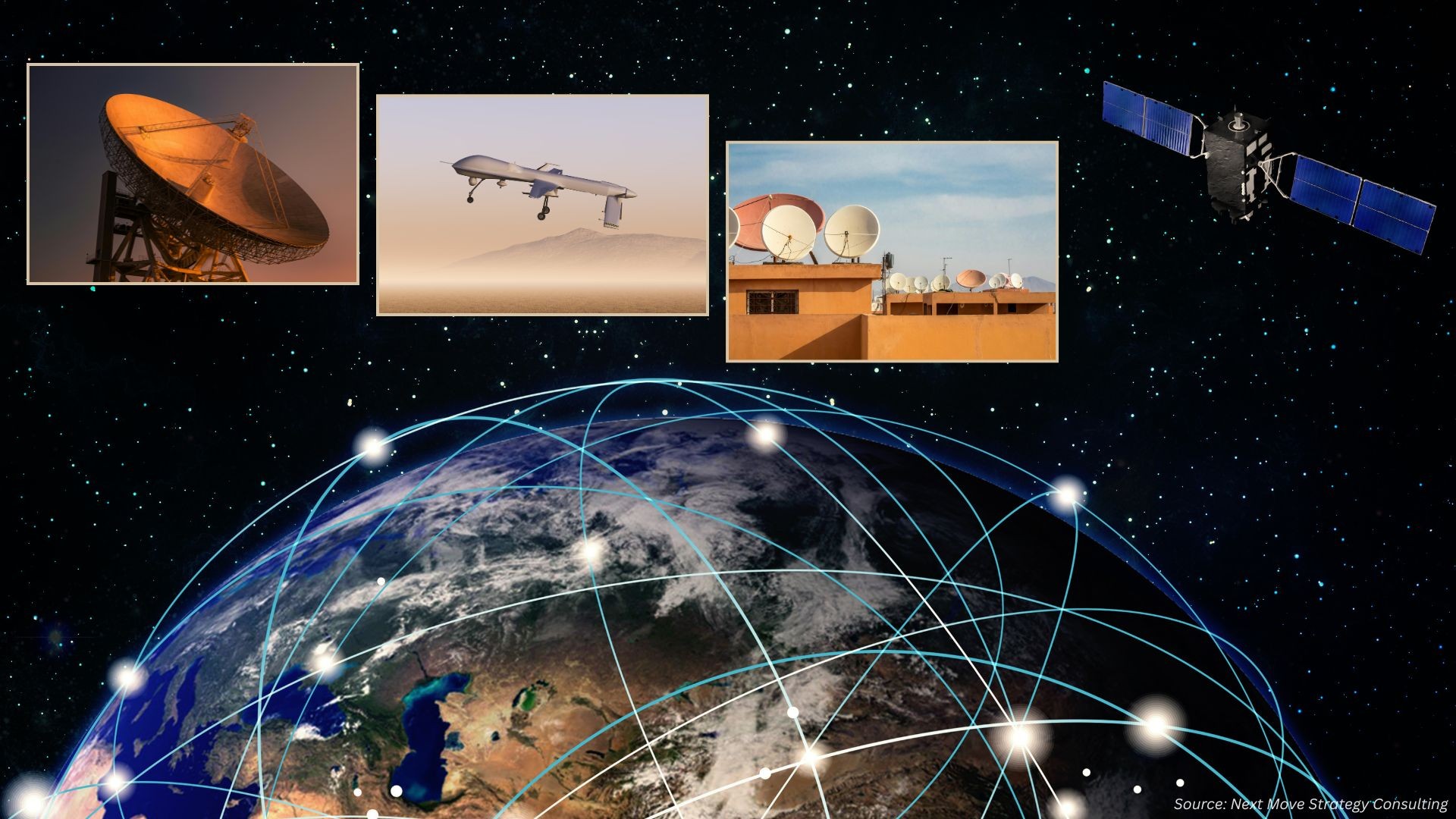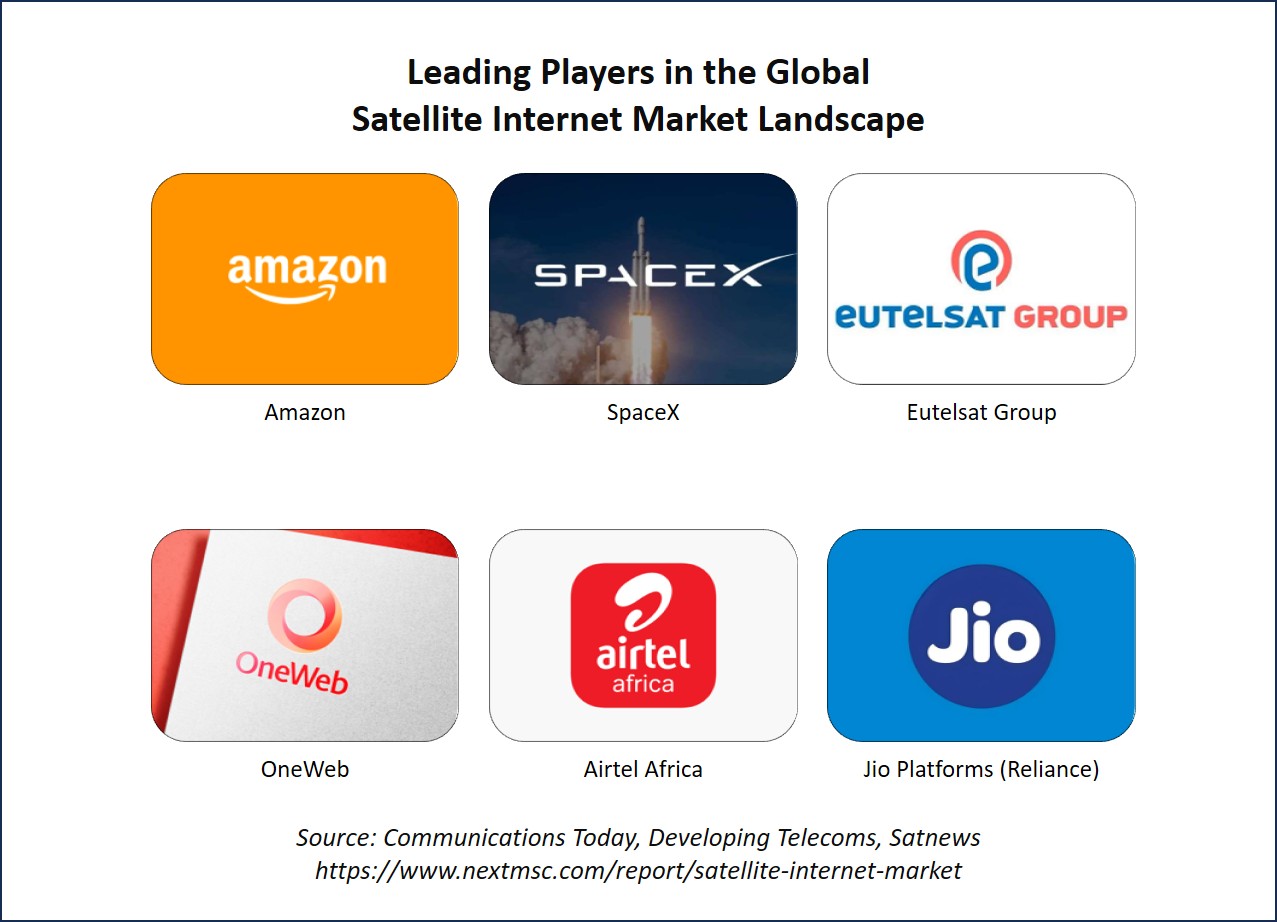Satellite Internet Soars: Regulatory Wins, Rail Trials, and Constellation Milestones
Published: 2025-10-13

Satellite internet is transforming global connectivity, bridging gaps in remote areas where traditional infrastructure falls short. As of October 2025, fresh advancements signal accelerated adoption, promising reliable broadband for industries worldwide.
Satellite Internet Market: Navigating 2024–2025 Milestones
The global Satellite Internet Market size is predicted to reach USD 23.46 billion by 2030 with a CAGR of 21.8%. The sector has seen pivotal shifts in the past year, driven by regulatory progress, innovative trials, and aggressive constellation builds.
In India, the Department of Telecommunications anticipates spectrum allocation to operators including Starlink, Eutelsat OneWeb, and Jio Satellite by December 2024, paving the way for commercial services in the first quarter of 2026. This follows delays in administrative pricing, with the DoT seeking clarifications from the Telecom Regulatory Authority of India on spectrum charges and subsidies.
Trai's May 2024 recommendations include a 4% levy on adjusted gross revenue and a minimum floor of Rs 3,500 per MHz, alongside Rs 500 per urban subscriber annually for non-geostationary operators to boost rural focus. These steps address high terminal costs—ranging from Rs 20,000 to Rs 50,000—through potential Digital Bharat Nidhi subsidies, essential for rural viability.
Across Africa, Airtel Africa achieved a breakthrough in 2025 by trialing satellite internet on a moving train over 669 kilometers of remote, forested terrain, delivering uninterrupted high-speed access where cell towers and fiber cannot reach. Powered by Eutelsat's OneWeb low-Earth orbit constellation, the test hit download speeds of 100 Mbps and uploads of 20 Mbps, matching planned performance for operational and passenger use. This innovation extends Airtel Satellite for Business to nations like Nigeria, Democratic Republic of Congo, Zambia, Madagascar, and Gabon.
Meanwhile, Amazon's Project Kuiper advanced its constellation with the KF-03 mission on October 9, 2025, launching 24 satellites via SpaceX Falcon 9 from Cape Canaveral, elevating the total to 153 operational satellites. This expansion is supported by a $140 million Kennedy Space Center facility at Kennedy Space Center, equipped for high-throughput satellite processing and a rapid launch cadence. Kuiper aims for full deployment to serve underserved regions. These developments underscore a market maturing toward hybrid connectivity models, where satellite complements terrestrial networks without direct competition.
An NMSC Viewpoint –
For B2B stakeholders, these updates impact the satellite internet market profoundly. Spectrum auctions in emerging economies like India are expected to attract multi-billion-dollar infrastructure investments by 2027, per regulatory projections, while mobility trials in Africa highlight scalable revenue streams from enterprise services. As a market research firm, Next Move Strategy Consulting views this as a catalyst for growth through 2030, empowering procurement teams to prioritize LEO-based solutions for resilient supply chains.
Applications Across Industries: Unlocking New Frontiers
Satellite internet's low-latency, high-throughput capabilities—enabled by low-Earth orbit systems—extend beyond consumer broadband to critical B2B uses. In transportation, the Airtel Africa trial demonstrates real-time monitoring and predictive maintenance for rail operators, alongside passenger Wi-Fi for digital ticketing and streaming. This addresses connectivity voids in sub-Saharan Africa's vast rail networks, where 70% of routes lack reliable coverage.
For rural and remote enterprises, subsidies in India target agriculture and mining, proposing subsidies to make terminals affordable for IoT-enabled agriculture and mining operations. Energy sectors benefit from offshore platform links, while logistics firms gain from asset tracking in underserved maritime zones.
Overall, these applications foster operational efficiency, with satellite addressing up to one-third of connectivity gaps in remote regions, according to market estimates.
Transportation and Logistics: Seamless in-motion connectivity for trains and fleets, reducing downtime by 25% through remote diagnostics.
Agriculture and Mining: Affordable rural broadband for precision farming and safety monitoring, vital in regions like India's hinterlands.
Energy and Utilities: Offshore and pipeline surveillance, ensuring compliance in isolated sites.
Regional Analysis: Dominance and Growth Hotspots
- North America maintains dominance in the satellite internet market, fueled by robust infrastructure and private investments.
- The United States leads as the top country, with Amazon's Project Kuiper leveraging domestic launch sites like Kennedy Space Center for rapid scaling—its October 2025 mission alone added 24 satellites to orbit.
- This edge stems from favorable regulations and SpaceX partnerships, positioning the U.S. as the leading contributor to global LEO capacity by 2026. Canada's contributions, via Telesat's Lightspeed constellation, bolster North American leadership in enterprise solutions.
- Asia-Pacific emerges as the fastest-growing region, propelled by population density and digital inclusion mandates.
- India tops the list here, with DoT's December 2024 spectrum allocation set to activate Starlink, Eutelsat OneWeb, and Jio Satellite services by Q1 2026, targeting rural users.
- Trai's subsidy framework addresses terminal affordability, driving 25% annual growth through 2028. China's state-backed efforts, including GuoWang's 13,000-satellite plan, further accelerate the region's expansion, though India's regulatory clarity provides a more immediate B2B entry point.
- Europe holds steady as a mature hub, with Eutelsat's OneWeb driving cross-continental coverage.
- The United Kingdom leads, benefiting from post-Brexit spectrum policies that enabled OneWeb's 648-satellite deployment, now powering trials like Airtel's African rail test. This supports 15% market growth, emphasizing hybrid 5G-satellite models for industrial IoT.
|
Region |
Dominating/ Growth Status |
Top Country |
Key Leadership Factor |
|
North America |
Dominating |
United States |
$140M launch infrastructure enabling 153+ satellites by October 2025 |
|
Asia-Pacific |
Fastest-Growing |
India |
Spectrum allocation by Dec 2024 for Q1 2026 rollout, subsidizing rural terminals |
|
Europe |
Mature Hub |
United Kingdom |
OneWeb constellation powering mobility trials across continents |
These dynamics offer procurement professionals clear lanes: North America for scalable innovation, Asia-Pacific for cost-effective expansion.
Key Players: Strategies and Innovations in Action
-
Established giants and agile entrants shape the market through targeted deals and tech pushes. Amazon leads with Project Kuiper's aggressive launches, including the KF-03 mission's 24-satellite deployment on October 9, 2025, via SpaceX. This strategy accelerates global coverage, aiming for service beta in 2026.
-
Eutelsat Group, a European stalwart, advances LEO integration via OneWeb, partnering with Airtel Africa for the 2025 rail trial that achieved 100 Mbps in dense forests. This deal expands into African markets, emphasizing seamless handoffs for transport sectors.
-
Emerging players like Bharti Airtel innovate in application layers, rolling out Airtel Satellite for Business post-trial to five African countries, focusing on in-motion connectivity. In India, Jio Platforms (Reliance) positions as a local disruptor, awaiting spectrum to blend satellite with its 5G network for hybrid rural services.
These moves link directly to B2B value: Kuiper's scale for global enterprises, OneWeb's reliability for mobility, and Airtel's affordability for emerging markets.
Future Prospects: Bridging Tomorrow's Gaps
Looking ahead, satellite internet promises ubiquitous coverage, with hybrid models dominating by 2030. India's 2026 rollout could extend broadband access to hundreds of millions of currently unserved users.
An example: Rail operators in Africa envision predictive analytics slashing maintenance costs by 30%, scalable to maritime logistics.
For industry buyers, this forecasts resilient networks against climate disruptions, with ROI from reduced downtime. As regulations align, expect consolidated deals favoring LEO leaders.
About Next Move Strategy Consulting:
Next Move Strategy Consulting is a premier market research and management consulting firm that has been committed to provide strategically analysed well documented latest research reports to its clients. The research industry is flooded with many firms to choose from, what makes NMSC different from the rest is its top-quality research and the obsession of turning data into knowledge by dissecting every bit of it and providing fact-based research recommendation that is supported by information collected from over 500 million websites, paid databases, industry journals and one on one consultations with industry experts across a diverse range of industry sectors. The high-quality customized research reports with actionable insights and excellent end-to-end customer service help our clients to take critical business decisions that enables them to move beyond time and have competitive edge in the industry.
We have been servicing over 1000 customers globally that includes 90% of the Fortune 500 companies over a decade. Our analysts are constantly tracking various high growth markets and identifying hidden opportunities in each sector or the industry. We provide one of the industry’s best quality syndicate as well as custom research reports across 10 different industry verticals. We are committed to deliver high quality research solutions in accordance to your business needs. Our industry standard delivery solutions that ranges from the pre consultation to after-sales services, provide an excellent client experience and ensure right strategic decision making for businesses.
For more information, please contact:
Next Move Strategy Consulting
5th Floor 867
Boylston St, STE 500,
Boston, MA 02116, U.S.
E-Mail: [email protected]
Direct: +18577585017
Website: www.nextmsc.com
About the Author
 Sneha Chakraborty is a passionate SEO Executive and Content Writer with over 4 years of experience in digital marketing and content strategy. She excels in creating optimized, engaging content that enhances online visibility and audience engagement. Skilled in keyword research, analytics, and SEO tools, Sneha blends creativity with data-driven insights to deliver impactful results. Beyond her professional work, she enjoys reading, sketching, and nature photography, drawing inspiration from creativity and storytelling.
Sneha Chakraborty is a passionate SEO Executive and Content Writer with over 4 years of experience in digital marketing and content strategy. She excels in creating optimized, engaging content that enhances online visibility and audience engagement. Skilled in keyword research, analytics, and SEO tools, Sneha blends creativity with data-driven insights to deliver impactful results. Beyond her professional work, she enjoys reading, sketching, and nature photography, drawing inspiration from creativity and storytelling.
About the Reviewer
 Sanyukta Deb is an accomplished Content Writer and Digital Marketing Strategist with extensive expertise in content strategy, SEO, and audience engagement. She specializes in building strong brand visibility through data-driven campaigns and impactful, value-added researched content. With a passion for creativity and innovation, she blends strategic thinking with design and communication to craft meaningful digital experiences. Over the years, she has contributed cross-functional marketing projects, driving measurable impact and audience engagement.
Sanyukta Deb is an accomplished Content Writer and Digital Marketing Strategist with extensive expertise in content strategy, SEO, and audience engagement. She specializes in building strong brand visibility through data-driven campaigns and impactful, value-added researched content. With a passion for creativity and innovation, she blends strategic thinking with design and communication to craft meaningful digital experiences. Over the years, she has contributed cross-functional marketing projects, driving measurable impact and audience engagement.















Add Comment